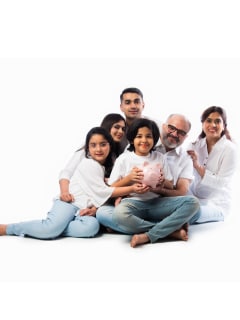CKYC Registry
-
Customer Service Contact us Service request Locate a branch
Find all the help you need
Scan the QR, get our app, and find help on your fingertips

Help CenterSupport topics, Contact us, FAQs and more
-
Login
Are you ready for an upgrade?
Login to the new experience with best features and services
-
Login
Are you ready for an upgrade?
Login to the new experience with best features and services
- Accounts
-
Deposits
IDFC FIRST Bank Deposits
View all Deposits -
Loans
IDFC FIRST Bank Loans
View all Loans - Wealth & Insure
-
Payments
IDFC FIRST Bank Payments
View all Payments -
Cards
IDFC FIRST Bank Cards
View all Cards - Blogs
- Corporate Account
-
Cash Management Services
IDFC FIRST Bank Cash Management Services
View all Cash Management Services - Supply Chain Finance
-
Corporate Lending
IDFC FIRST Bank Lending
View all -
Treasury
IDFC FIRST Bank Treasury
See more details - NBFC Financing
Support topics, Contact us, FAQs and more
- IDFC FIRST Bank Accounts
-
Savings Account
-
Corporate Salary
Account -
Senior Citizens
Savings Account -
First Power
Account -
Current Account
-
NRI Savings
Account -
TASC Institutional
Account -
Savings Account
Interest Calculator
- IDFC FIRST Bank Deposits
-
Fixed Deposit
-
Recurring Deposit
-
NRI Fixed Deposit
-
Safe Deposit Locker
-
FD Calculator
-
RD Calculator
- IDFC FIRST Bank Loans
-
Personal Loan
-
Consumer Durable
Loan -
Home Loan
-
Business Loan
-
Professional Loan
-
Education Loan
-
New Car Loan
-
Pre-owned Car Loan
-
Two Wheeler Loan
-
Pre-owned Two
Wheeler Loan -
Commercial Vehicle
Loan -
Gold Loan
-
Loan Against Property
-
Loan Against Securities
-
Easy Buy EMI card
-
Personal Loan
EMI Calculator -
Education Loan
EMI Calculator -
Home Loan
EMI Calculator
- IDFC FIRST Bank Wealth & Insure
-
FIRST Select
-
FIRST Wealth
-
FIRST Private
-
Mutual Funds
-
Sovereign Gold Bond
-
Demat Account
-
Term Insurance
-
Life Insurance
-
Health Insurance
-
General Insurance
-
Bonds
-
Loan Against
Securities -
Portfolio Management
Service
- IDFC FIRST Bank Payments
-
FASTag
-
Credit Card
Bill Payments -
UPI
-
Funds Transfer
-
Forex Services
-
Pay Loan EMI
- IDFC FIRST Bank Cards
-
Ashva :
Metal Credit Card -
Mayura :
Metal Credit Card -
FIRST Millennia
Credit Card -
FIRST Classic
Credit Card -
FIRST Select
Credit Card -
FIRST Wealth
Credit Card -
FIRST WOW!
Credit Card -
Deals
-
Debit Cards
-
Co-branded Cards
-
Credit Card
EMI Calculator -
FIRST Corporate
Credit Card -
FIRST Purchase
Credit Card -
FIRST Business
Credit Card
- Premium Metal Credit Cards
-
AshvaLifestyle1% Forex₹2,999
-
MayuraLifestyleZero Forex₹5,999
-
FIRST PrivateInvite Only
- Best for travellers
-
MayuraZero ForexMetal₹5,999
-
Ashva1% ForexMetal₹2,999
-
FIRST WOW!Zero ForexTravelLifetime Free
-
FIRST SWYPTravel OffersEMI₹499
-
FIRST Select1.99% ForexLifestyleLifetime Free
-
FIRST Wealth1.5% ForexLifestyleLifetime Free
-
Club VistaraTravelLifestyle₹4,999
-
IndiGo IDFC FIRST Dual Credit CardTravelLifestyle₹4,999
- Max benefits, Free for life
-
FIRST Classic10X RewardsShoppingNever Expiring Rewards
-
FIRST Millennia10X RewardsShoppingNever Expiring Rewards
-
FIRST Select10X RewardsLifestyle1.99% Forex
-
FIRST Wealth10X RewardsLifestyle1.5% Forex
-
FIRST WOW!RewardsTravelZero Forex
-
LIC ClassicRewardsInsuranceShopping
-
LIC SelectRewardsInsuranceShopping
- Reward Multipliers
-
AshvaLifestyleMetal₹2,999
-
MayuraLifestyleZero Forex₹5,999
-
FIRST ClassicNever Expiring RewardsShoppingLifetime Free
-
FIRST MillenniaNever Expiring RewardsShoppingLifetime Free
-
FIRST SelectNever Expiring RewardsLifestyleLifetime Free
-
FIRST WealthNever Expiring RewardsLifestyleLifetime Free
- Rewards & Credit on UPI
-
FIRST Power+FuelUPI₹499
-
FIRST PowerFuelUPI₹199
-
FIRST EA₹NVirtual1% Cashback₹499
-
FIRST DigitalVirtualUPI₹199
-
IndiGo IDFC FIRST Dual Credit CardUPITravelDual cards
- Fuel and Savings
-
FIRST PowerRewardsUPI₹199
-
FIRST Power+RewardsUPI₹499
-
LIC ClassicRewardsInsuranceShopping
-
LIC SelectRewardsInsuranceShopping
- Express and Flaunt
-
AshvaMetal1% Forex₹2,999
-
MayuraMetalZero Forex₹5,999
-
FIRST SWYPEMIOfferMAX₹499
-
FIRST MillenniaRewardsShoppingLifetime Free
- FD Backed rewarding Credit Cards for all
-
FIRST EA₹NVirtualCashback₹499
-
FIRST WOW!Zero ForexTravelLifetime Free
-
CreditPro Balance TransferTransfer & SaveReduce InterestPay Smartly
- IDFC FIRST Bank NRI Forex Solutions
-
Send money to India-Wire transfer
-
Send money to India-Digitally
-
Send money abroad
-
Max Returns FD (INR)
- IDFC FIRST Bank MSME Accounts
-
Platinum Current
Account -
Gold
Current Account -
Silver Plus
Current Account -
Merchant Multiplier
Account -
Agri Multiplier
Account -
TASC Institutional
Account -
Dynamic Current
Account -
World business
Account -
First Startup
Current Account
- IDFC FIRST Bank Business Loans
-
Business Loan
-
Professional Loan
-
Loan Against Property
-
Business Loan for Women
-
Working Capital Loan
-
Construction Equipment Loan
-
Machinery Loan
-
Healthcare Equipment Loan
- IDFC FIRST Bank Business Solutions
-
Payment Solutions
-
Tax Payments
-
Doorstep Banking
-
Point of Sale (POS)
-
Escrow Accounts
-
NACH
-
Payment Gateway
-
UPI
-
Virtual Accounts
-
As per amendment in the Income Tax Rules, PAN or Aadhaar are to be mandatorily quoted for cash deposit or withdrawal aggregating to Rupees twenty lakhs or more in a FY. Please update your PAN or Aadhaar. Kindly reach out to the Bank’s contact center on 1800 10 888 or visit the nearest IDFC FIRST Bank branch for further queries.
-
-
Most Searched
Sorry!
We couldn’t find ‘’ in our website
Here is what you can do :
- Try checking the spelling and search
- Search from below suggestions instead
- Widen your search & try a more generic keyword
Suggested
Get a Credit Card
Enjoy Zero Charges on All Commonly Used Savings Account Services
Open Account Now
Savings Account
Savings Account vs Current Account: Key differences & benefits
Key Takeaways
A savings account is the best option for salaried individuals, while a current account is useful for businesses.
Advantages of a savings account are liquidity, interest earnings leading to growth of money, security and operational convenience.
Besides liquidity, the other key advantages of a current account are overdraft facility, direct debits and standing instructions, record-keeping and a range of payment methods that facilitate convenient business transactions.
A savings account is the best option for salaried individuals, while a current account is useful for businesses and corporations.
Savings accounts and current accounts have distinct characteristics and use. People whose primary goal is to maximise savings should open a savings account, whereas enterprises and companies must open current accounts as per the mandate by the Reserve Bank of India (RBI). Most leading banks in India, such as IDFC FIRST Bank, allow you to open both types of accounts. Here are a few key things to note about a savings account vs a current account:
- Savings accounts pay a higher rate of interest than current accounts. No interest is paid in the current account
- Savings accounts are beneficial to salaried individuals, whereas current accounts are better suited to businesses and corporations.
While these pointers may help you decide whether to open a savings account or current account, there is a lot more that you should keep in mind to make an informed decision. To begin with, let us understand the meaning of a savings account and a current account.
Savings account meaning
A savings account is a financial instrument where you can save extra cash. You can deposit money in a savings account and withdraw it whenever the need arises. Every time you deposit money into a savings account, it adds to your savings. Additionally, you can gain interest from the money parked in your savings account.
You can open a savings account online with IDFC FIRST Bank through the website, which can be accessed on your laptop, desktop or mobile device. It makes the process hassle-free. Furthermore, there are various types of savings accounts offered by IDFC FIRST Bank, so you can choose the one that truly works for you.
READ MORE
Current account meaning
If you run a business, you might have to withdraw and transfer large sums of money every day. A current account can help you conveniently manage your funds. While a current account does not pay interest like a savings account, it has a high daily deposit and withdrawal limit. You can also get access to several services that benefit your business, including doorstep banking, cash management services, payment and collections solutions (e.g. UPI QR, Payment gateway, bulk pay), specialised platforms for business banking, trade forex solutions, short-term loans and an overdraft facility.
The savings account interest rate varies from one bank to another. With IDFC FIRST Bank, you can earn an interest of up to 7.00% p.a. – among the best in the industry – and enjoy monthly interest payouts.
Advantages of savings account
Here are a few salient features of savings accounts:
Liquidity:
Interest earnings:
Security:
Convenience:
These accounts are highly liquid, allowing you to access your money at any time, making them a convenient option for emergency funds or short-term savings goals.
Savings accounts earn interest on your deposits, with competitive savings account interest rate that help your money grow over time.
With a savings account in scheduled banks in India, your deposits are secured up to a limit of ₹5 lakhs, ensuring your savings are protected.
Features like online banking, direct deposit, and automatic transfers make it easier to save and keep track of your funds.
Advantages of current account
Following are the key benefits of opening a current account:
Liquidity:
Overdraft facility:
Business transactions:
Record-keeping:
Direct debits and standing instructions:
Other benefits:
Current accounts provide the highest level of liquidity and higher transaction limits, making them ideal for everyday financial transactions, bill payments, and cash withdrawals.
Many current accounts come with an overdraft facility, which can be useful in case of temporary cash flow issues, preventing bounced checks and ensuring continuous financial operations.
For businesses, current accounts are essential for managing daily transactions, receiving payments from customers, and making regular payments to suppliers and employees.
They provide a detailed record of transactions, simplifying financial management, budgeting, and tax preparation.
Current accounts facilitate direct debits and standing instructions for automated bill payments, reducing the hassle of manual payments.
They offer a range of payment methods, including cheques, debit cards, and online banking, making it easy to manage your finances and pay bills.
Difference between a savings account and a current account
The major differences between a savings account and a current account include:
Use
Savings accounts help people save and multiply their money. Banks provide interest on parked funds, which helps build a wealth corpus. IDFC FIRST Bank Savings Accounts offer competitive interest rates of up to 7.00% p.a., with monthly interest payouts, helping you leverage the power of compounding. Essential services also come with zero hidden costs; these zero fee services include IMPS, NEFT, RTGS, ATM transactions, Cash transactions, Cheque book issuance, SMS alerts and more.
Current accounts, meanwhile, allow you to handle your daily business activities with ease. Banks also provide current account customers with an overdraft facility and quick loans to ensure they are never short on cash.
Suitability
A savings account is the best option if you have a regular source of income. A savings account is also useful for individuals with short-term financial goals, such as those saving for a future vacation, paying for a wedding, or purchasing a car. Individuals and organisations who make regular money transfers, such as businessmen and companies, are better off with a current account.
Transaction limit
Financial institutions that allow you to open a savings account set a restriction on the total transactions you can make in a month. IDFC FIRST Bank Savings Accounts provide an increased daily purchase limit of up to ₹6 lakh and a higher daily ATM withdrawal limit of up to ₹2 lakh, delivering flexibility and convenience for managing your finances.
The number of transactions with a current account is unlimited, but you will be charged once you breach the transaction limit.
Ensure that when you decide to open either a savings or current account, you choose a reliable bank, such as IDFC FIRST Bank to help you easily open an account and access it through multiple channels.
How to choose between a savings account vs a current account?
Choosing between a savings account and a current account depends on your financial objectives and transaction requirements. If your aim is to save money over time, build an emergency fund, or attain specific financial goals, a savings account can be a suitable choice. It typically offers modest interest rates, saving over the long term, however, it often comes with transaction limits, making it less suitable for daily spending.
On the other hand, if you need an account for everyday financial activities like paying bills, making purchases, or receiving income, a current account is more appropriate. It provides the highest liquidity, enabling frequent access to your funds. Current accounts are ideal for individuals running a small business or those who require flexibility in managing their daily financial affairs.
Ultimately, the choice also depends on the associated fees and interest rates. Savings accounts typically have lower fees and provide interest, though at lower rates, while current accounts may come with more fees and offer little to no interest.
You can even choose to maintain both types of accounts, tailoring each to your distinct financial needs. By evaluating your goals, transaction patterns, and financial preferences, you can make an informed decision between a savings account and a current account.
Disclaimer
The contents of this article/infographic/picture/video are meant solely for information purposes. The contents are generic in nature and for informational purposes only. It is not a substitute for specific advice in your own circumstances. The information is subject to updation, completion, revision, verification and amendment and the same may change materially. The information is not intended for distribution or use by any person in any jurisdiction where such distribution or use would be contrary to law or regulation or would subject IDFC FIRST Bank or its affiliates to any licensing or registration requirements. IDFC FIRST Bank shall not be responsible for any direct/indirect loss or liability incurred by the reader for taking any financial decisions based on the contents and information mentioned. Please consult your financial advisor before making any financial decision.
The features, benefits and offers mentioned in the article are applicable as on the day of publication of this blog and is subject to change without notice. The contents herein are also subject to other product specific terms and conditions and any third party terms and conditions, as applicable. Please refer our website www.idfcfirstbank.com for latest updates.






















